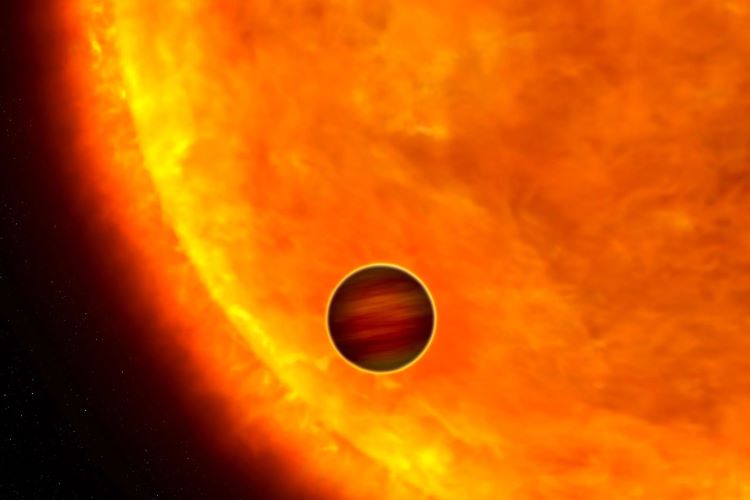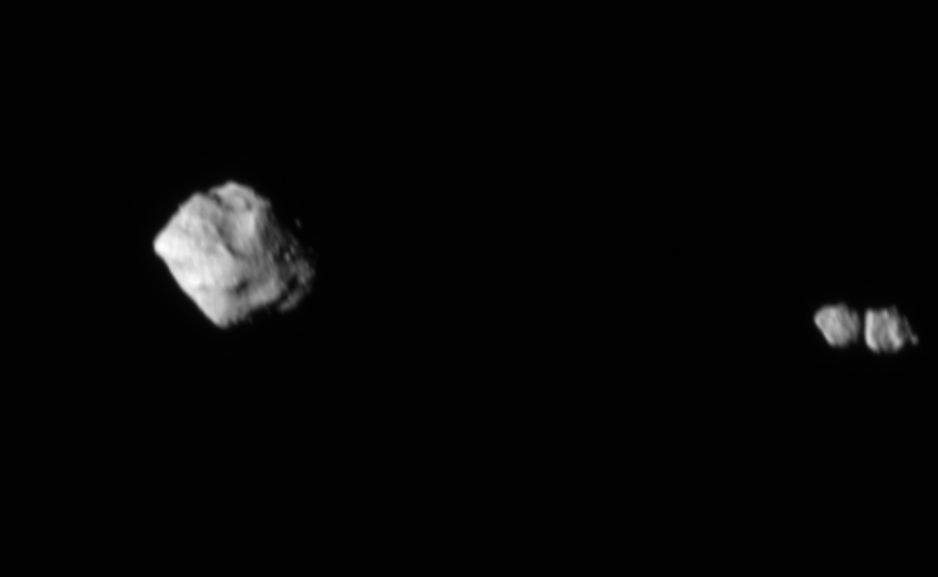Ultra-hot Jupiters (UHJs) are some of the most fascinating astronomical objects in the cosmos, classified as having orbital periods of less than approximately 3 days with dayside temperatures exceeding 1,930 degrees Celsius (3,500 degrees Fahrenheit), as most are tidally locked with their parent stars. But will these extremely close orbits result in orbital decay for UHJs eventually doom them to being swallowed by their star, or can some orbit for the long term without worry? This is what a recent study accepted to the Planetary Science Journal hopes to address as a team of international researchers investigated potential orbital decays for several UHJs, which holds the potential to not only help astronomers better understand UHJs but also the formation and evolution of exoplanets, overall.
Continue reading “Maybe Ultra-Hot Jupiters Aren’t So Doomed After All”Could Alien Solar Panels Be Technosignatures?

If alien technological civilizations exist, they almost certainly use solar energy. Along with wind, it’s the cleanest, most accessible form of energy, at least here on Earth. Driven by technological advances and mass production, solar energy on Earth is expanding rapidly.
It seems likely that ETIs (Extraterrestrial Intelligence) using widespread solar energy on their planet could make their presence known to us.
Continue reading “Could Alien Solar Panels Be Technosignatures?”Finding The Age Of A Contact Binary “Moon”
There are millions of asteroids floating around the solar system. With so many of them, it should be no surprise that some are weirdly configured. A recent example of one of these weird configurations was discovered when Lucy, NASA’s mission to the Trojan asteroids, passed by a main-belt asteroid called Dinkinesh. It found that Dinkinesh had a “moon” – and that moon was a “contact binary”. Now known as Selam, it is made up of two objects that physically touch one another through gravity but aren’t fully merged into one another. Just how and when such an unexpected system might have formed is the subject of a new paper by Colby Merrill, a graduate researcher at Cornell, and their co-authors at the University of Colorado and the University of Bern.
Continue reading “Finding The Age Of A Contact Binary “Moon””After Swirling Around a Black Hole, Matter Just Falls Straight In

The physics surrounding black holes is just plain weird. A gravitational well so strong that not even light can escape can do some pretty strange things to normal matter. Over the decades, plenty of theories have been put forward about what those strange things might be. And now, a new paper from physicists at the University of Oxford has proved that, once again, Einstein’s theory of gravity was right.
Continue reading “After Swirling Around a Black Hole, Matter Just Falls Straight In”The Habitable Worlds Observatory Could See Lunar and Solar ‘Exo-Eclipses’

A future space observatory could use exo-eclipses to tease out exomoon populations.
If you’re like us, you’re still coming down from the celestial euphoria that was last month’s total solar eclipse. The spectacle of the Moon blocking out the Sun has also provided astronomers with unique scientific opportunities in the past, from the discovery of helium to proof for general relativity. Now, eclipses in remote exoplanetary systems could aid in the hunt for elusive exomoons.
Continue reading “The Habitable Worlds Observatory Could See Lunar and Solar ‘Exo-Eclipses’”New Shepard’s 25th Launch Carries Six to the Edge of Space and Back
Sending tourists to space is still relatively novel in the grand scheme of humanity’s journey to the stars. Dennis Tito took the first-ever paid trip in 2001, but since then, plenty of others have journeyed to the heavens. Increasingly, they’ve done so via systems developed by private companies. On Sunday, May 19th, Blue Origin, originally founded by Jeff Bezos to pursue his dreams of humanity’s future in space, successfully launched its seventh crewed mission – this time containing six first-time astronauts, including one that waited a long time for his day in space.
Continue reading “New Shepard’s 25th Launch Carries Six to the Edge of Space and Back”That Recent Solar Storm Was Detected Almost Three Kilometers Under the Ocean
On May 10th, 2024, people across North America were treated to a rare celestial event: an aurora visible from the Eastern Seabord to the Southern United States. This particular sighting of the Northern Lights (aka. Aurora Borealis) coincided with the most extreme geomagnetic storm since 2003 and the 27th strongest solar flare ever recorded. This led to the dazzling display that was visible to residents all across North America but was also detected by some of Ocean Networks Canada‘s (ONC) undersea sensors at depths of almost three kilometers.
Continue reading “That Recent Solar Storm Was Detected Almost Three Kilometers Under the Ocean”More Evidence for the Gravitational Wave Background of the Universe
The gravitational wave background was first detected in 2016. It was announced following the release of the first data set from the European Pulsar Timing Array. A second set of data has just been released and, joined by the Indian Pulsar Timing Array, both studies confirm the existence of the background. The latest theory seems to suggest that we’re seeing the combined signal of supermassive black hole mergers.
Continue reading “More Evidence for the Gravitational Wave Background of the Universe”When Uranus and Neptune Migrated, Three Icy Objects Were Crashing Into Them Every Hour!
The giant outer planets haven’t always been in their current position. Uranus and Neptune for example are thought to have wandered through the outer Solar System to their current orbital position. On the way, they accumulated icy, comet-like objects. A new piece of research suggests as many as three kilomerer-sized objects crashed into them every hour increasing their mass. Not only would it increase the mass but it would enrich their atmospheres.
Continue reading “When Uranus and Neptune Migrated, Three Icy Objects Were Crashing Into Them Every Hour!”Astronomers Discover the Second-Lightest “Cotton Candy” Exoplanet to Date.
The hunt for extrasolar planets has revealed some truly interesting candidates, not the least of which are planets known as “Hot Jupiters.” This refers to a particular class of gas giants comparable in size to Jupiter but which orbit very closely to their suns. Strangely, there are some gas giants out there that have very low densities, raising questions about their formation and evolution. This is certainly true of the Kepler 51 system, which contains no less than three “super puff” planets similar in size to Jupiter but is about one hundred times less dense.
These planets also go by the moniker “cotton candy” giants because their density is comparable to this staple confection. In a recent study, an international team of astronomers spotted another massive planet, WASP-193b, a fluffy gas giant orbiting a Sun-like star 1,232 light-years away. While this planet is roughly one and a half times the size of Jupiter, it is only about 14% as massive. This makes WASP-193b the second-lightest exoplanet observed to date. Studying this and other “cotton candy” exoplanets could provide valuable insight into how these mysterious giants form.
Continue reading “Astronomers Discover the Second-Lightest “Cotton Candy” Exoplanet to Date.”






